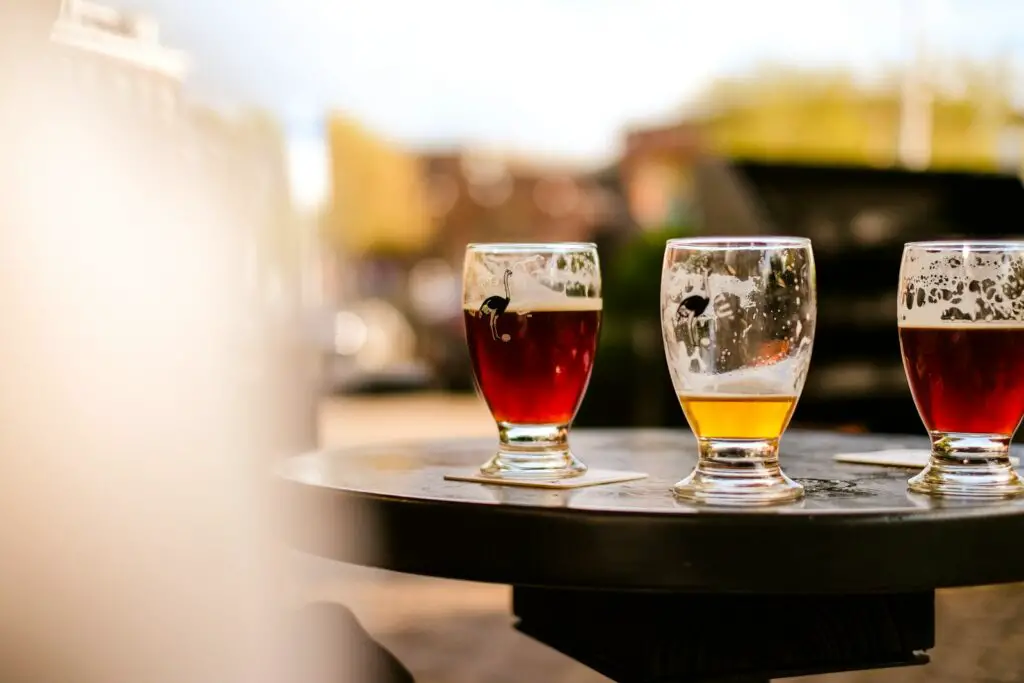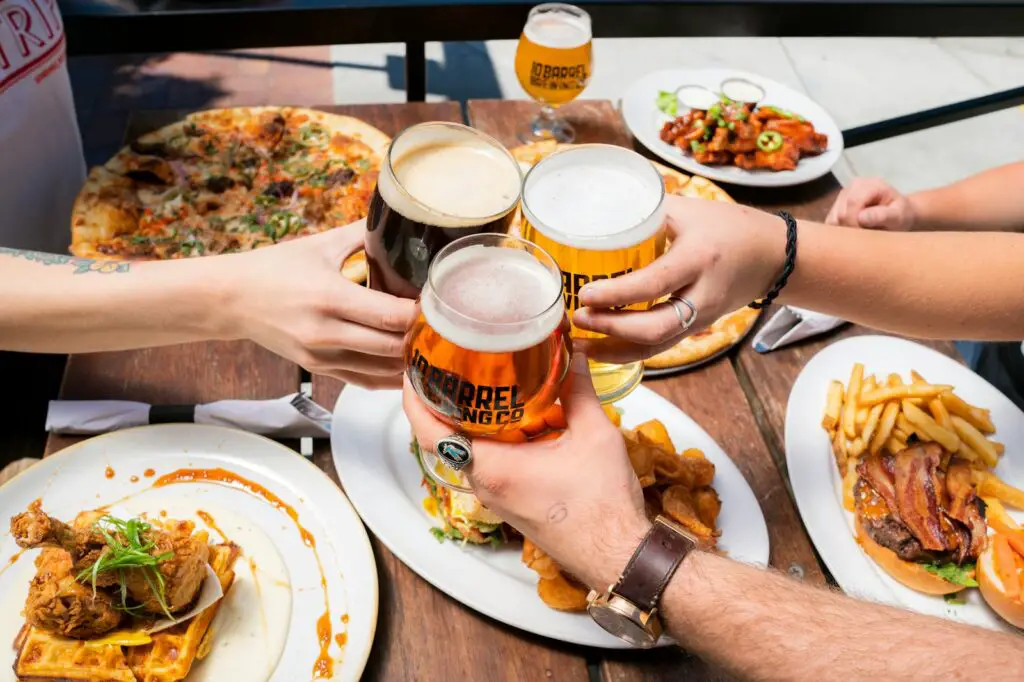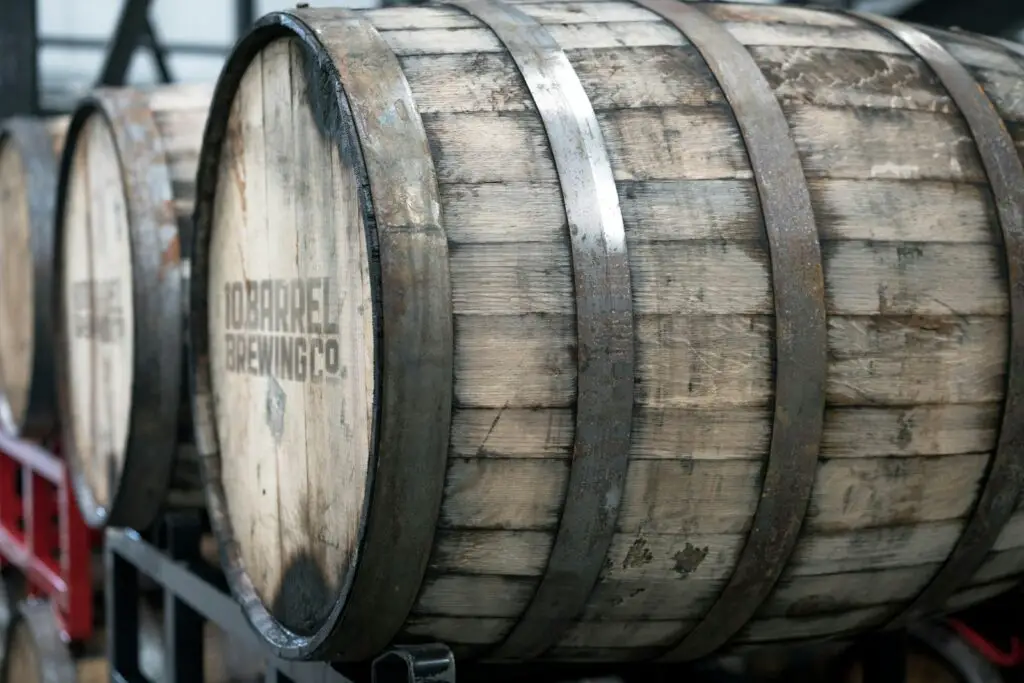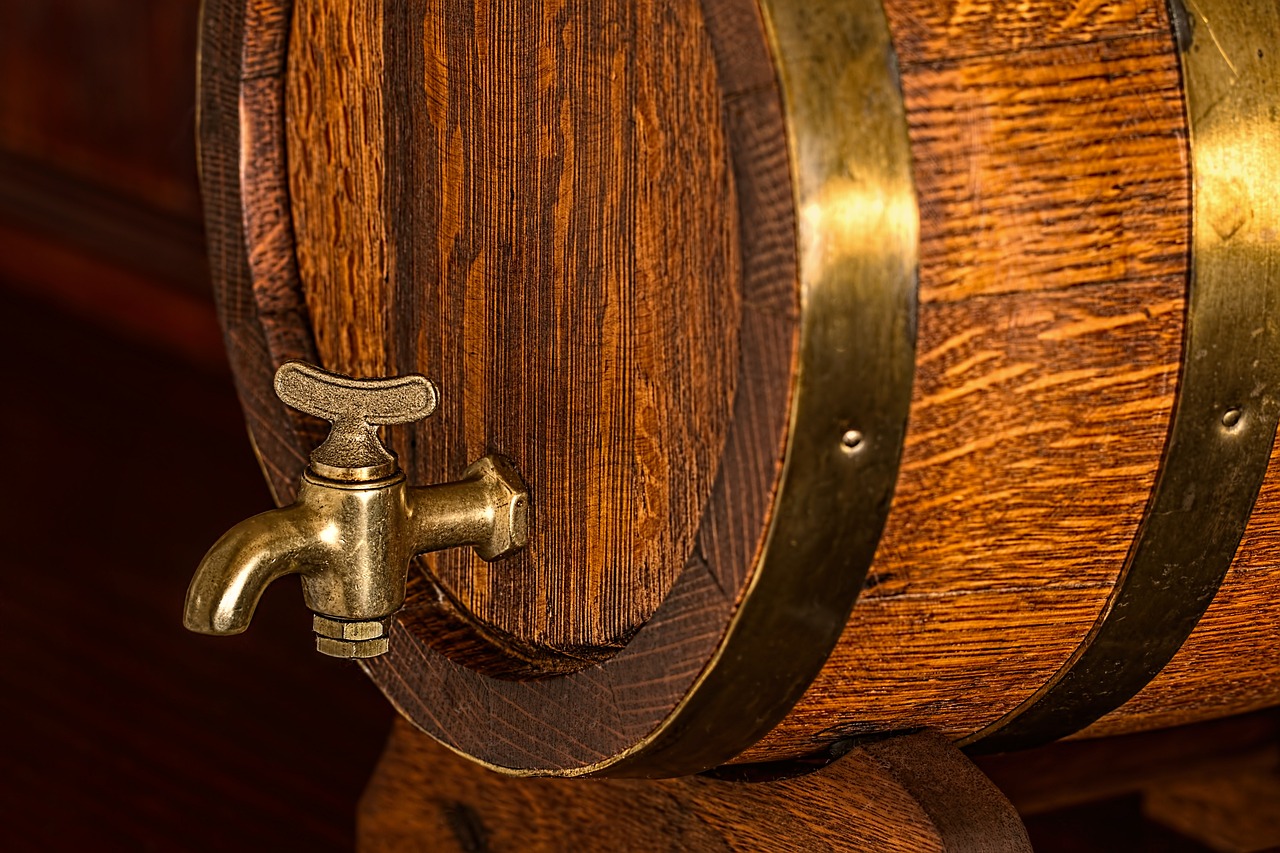Introduction to Local Craft Beer
Local craft beer has risen in popularity over the past decade, reflecting a growing interest in unique, regionally-inspired brews. Unlike mass-produced beers, craft beers are typically brewed in small batches using traditional methods and high-quality ingredients. This section provides an overview of the craft beer landscape, catering to both novices and experienced beer enthusiasts.
Local craft beer breweries are often characterized by their commitment to quality, innovation, and community engagement. Many of these breweries operate independently, allowing them to experiment with flavors, ingredients, and brewing techniques that set them apart from large-scale commercial breweries. This experimental approach often results in higher variability and unique tasting experiences for consumers.
Key Characteristics of Local Craft Beer
- Quality Ingredients: Craft breweries prioritize the use of premium ingredients. From locally-sourced malt to exotic hops, the emphasis is on quality over quantity.
- Brewing Techniques: Traditional brewing methods, combined with modern innovations, yield a diverse range of beer styles. Small-batch production allows for greater control over the brewing process.
- Unique Flavors: Craft beers often feature distinctive flavors, ranging from fruity and floral notes to rich and malty profiles. Breweries frequently introduce seasonal varieties to keep the selection fresh and exciting.
- Community Orientation: Local craft breweries are typically deeply embedded in their communities. Many host events, collaborate with local businesses, and support regional economies.
Benefits of Exploring Local Craft Beer
- Support Local Economy: Purchasing from local breweries helps sustain small businesses and contributes to the regional economy.
- Discover Unique Brews: With each brewery offering a different take on popular styles, consumers have the opportunity to explore a wide array of beers not available in mass markets.
- Educational Experience: Visiting local breweries and taprooms provides an educational experience, where consumers can learn about the brewing process, ingredient selection, and beer styles.
Tips for Getting Started
- Visit Local Breweries: Engage directly with the experts. Brewery tours and taproom visits offer an inside look at the brewing process and provide an opportunity to sample a variety of beers.
- Attend Beer Festivals: Beer festivals are excellent venues to explore multiple local breweries in one setting. They often feature limited-release beers and offer a range of styles to try.
- Join a Beer Club: Many local breweries and craft beer retailers offer subscription services that deliver a curated selection of beers to your door, allowing you to explore new brews regularly.
- Use Beer Apps: Technology can aid in your exploration. Apps like Untappd or BeerAdvocate offer user reviews, brewery information, and tools to track your tasting experiences.

Local craft beer provides a rich tapestry of flavors, styles, and experiences. It offers more than just a drink; it delivers a connection to the region, the people who make it, and the culture that embraces it.
Understanding Craft Beer Terminology
Navigating the world of craft beer requires familiarity with specific terminology. Understanding the jargon can enhance one’s experience and help in making informed choices.
Hops: Hops are flowers used primarily as a bittering, flavoring, and stability agent in beer. They impart fragrant, floral, fruity, or bitter flavors, balancing the malt’s sweetness.
Malts: Malts are grains that have been soaked, germinated, and dried. They form the backbone of a beer’s profile, imparting flavors that range from sweet and biscuity to rich and toasty.
Yeast: This microorganism ferments the sugars from the malt, producing alcohol and carbon dioxide. Different yeast strains can impart unique flavors, such as fruity esters or spicy phenols.
Types of Craft Beer
- IPA (India Pale Ale): Known for its strong hop bitterness and often citrusy or piney flavors.
- Stout: A dark, rich beer often characterized by flavors of coffee, chocolate, and roasted malt.
- Saison: A farmhouse ale that is typically fruity, spicy, and often has a high carbonation level.
Common Beer Descriptors
- ABV (Alcohol by Volume): Represents the percentage of alcohol in the beer. Typical craft beers range from 4% to over 10% ABV.
- IBU (International Bitterness Units): Measures the bitterness of beer from hop content. Higher IBU values indicate more bitterness.
“Understanding these terms not only aids in selecting beers but also in appreciating the craftsmanship involved.”
Beer Styles
Craft beers are categorized by style, each with distinct characteristics:
- Lagers: Clean and crisp with a pronounced maltiness and lower hop profile.
- Ales: Typically more robust and complex, with a wider range of flavors and aromas.
- Sours: Characterized by tartness, often achieved through specific bacteria or wild yeast.
Reading a Beer Label
- Style: Indicates the primary category of the beer.
- Origin: Often includes the brewery’s location, which can hint at unique regional brewing methods.
- Ingredients: Lists main components, providing insight into potential flavors.
- Brew Date: Important for freshness, particularly for hop-forward beers.
Familiarity with these terms and categories can significantly enhance one’s craft beer journey.
The History of Craft Beer in Your Area
The craft beer movement in this area has roots dating back to the early 1980s. Enthusiastic homebrewers, inspired by European brewing traditions, began experimenting in their garages and basements. By the mid-1990s, several of these hobbyists had transitioned from novice brewers to professional beer crafters, opening some of the first microbreweries in the region.
Key Milestones
- Early Beginnings
- 1982: The first homebrewing supply store opens, significantly contributing to the growth of the local homebrewing community.
- 1988: A pivotal year marked by the establishment of the first commercial brewery in this area.
- Expansion Era
- Mid-1990s: Growth of microbreweries explodes. Several small-scale breweries begin operations, offering unique and locally-sourced beers.
- 1997: Introduction of the first craft beer festival, which quickly becomes an annual highlight, drawing attention from both locals and tourists.
- Modern Developments
- 2005: Several breweries start experimenting with innovative brewing techniques and incorporating unique local ingredients, setting a trend for future brewers.
- 2010: A cooperative of local brewers launches, promoting collaboration and shared resources among smaller brewing establishments.
Influential Breweries
- Brewery Alpha: Known for its pioneering spirit in sour beer production, it gained national acclaim in the late 2000s.
- Historic Brewery: Established in 1988, it stands as a testament to the longevity and enduring popularity of local craft beer.
- Innovative Brewery: A leader in incorporating advanced brewing technology and sustainable practices since its inception in 2005.

Craft Beer Culture
The region has fostered a vibrant craft beer culture dedicated to quality and innovation. Brewpubs and taprooms have become popular social hubs, often hosting events such as:
- Weekly Beer Tastings: Allowing patrons to sample limited-release and experimental brews.
- Collaborative Brew Events: Opportunities for local brewers to work together on unique projects.
Impact on Local Economy
Craft beer has also played a significant role in boosting the local economy. The industry has:
- Created numerous job opportunities from brewing to sales.
- Increased tourism, with craft beer enthusiasts visiting from various regions.
- Supported local agriculture by sourcing ingredients from nearby farms.
The history of craft beer in this area is illustrated by a continuous evolution of creativity, community involvement, and economic growth. This collective journey highlights the powerful role of local craftsmanship and innovation in shaping a unique and thriving beer culture.
How to Find the Best Local Breweries
To discover the finest local breweries, several strategies can be employed to ensure a successful search. Identifying high-quality breweries involves research, community engagement, and leveraging modern technology.
Utilize Online Resources
- Brewery Directories: Websites such as BreweryDB and Untappd list local breweries. These directories offer detailed information, user reviews, and ratings.
- Social Media: Platforms like Instagram, Facebook, and Twitter allow breweries to post updates, events, and special releases. Following breweries and joining local craft beer groups can provide real-time information.
Consult Review Sites
- Yelp: Provides user-generated reviews and photographs of local breweries. Filter by rating and read detailed reviews to gauge the quality and ambiance.
- Google Reviews: Search for breweries and read extensive reviews. Pay attention to consistent compliments or complaints to discern patterns in quality and service.
Engage with the Local Community
- Word of Mouth: Conversations with locals, bartenders, and other craft beer enthusiasts can lead to valuable recommendations.
- Local Events and Festivals: Attend festivals and community events focused on craft beer to sample offerings from various breweries. These events often feature highlights of the best local breweries.
Leverage Mobile Apps
- BeerAdvocate: Offers ratings, reviews, and forums discussing specific breweries and their offerings.
- RateBeer: Features detailed reviews and ratings, assisting users in finding popular local breweries.
Visit Brewery Associations
- State and Regional Brewer’s Associations: Many regions have brewer’s associations with websites listing member breweries. These lists often include maps and contact information.
Explore Collaborations
- Collaborative Brews: Many breweries collaborate on special editions. Researching these can lead to discovering new, reputable breweries involved in the collaboration.
Identify Brewery Trails
- Brewery Trails: Many areas have established brewery trails designed to guide visitors through a curated selection of local breweries. These trails are often available online or through local tourism boards.
Check Local Media
- Newspapers and Magazines: Local media often highlight top breweries in the area, including new openings and popular spots.
Tourism Websites
- Regional Tourism Boards: Often list and promote local attractions, including breweries. Check their official websites for recommendations and itineraries.
By utilizing these methods, one can efficiently locate and assess the best local breweries. Employing a combination of these strategies ensures a comprehensive overview of available options.
Must-Try Craft Beer Styles
Exploring craft beers opens up a world of unique flavors and brewing techniques. Enthusiasts and newcomers alike should consider sampling the following must-try styles:
1. IPA (India Pale Ale)
IPAs are known for their strong hop presence, which imparts complex flavors and a distinctive bitterness. Within the IPA category, there are several subtypes:
- American IPA: Showcases a bold hop character with citrus, pine, or floral notes.
- Double/Imperial IPA: Features higher alcohol content and intensified hop flavors.
- New England IPA: Known for its hazy appearance and juicy, fruity profile.
2. Stout
Stouts are dark beers with robust, roasted flavors. These styles often include:
- Dry Stout: A well-balanced beer with a dry finish, exemplified by the famous Guinness.
- Imperial Stout: Displays high alcohol content and rich, complex flavors like chocolate, coffee, and dark fruits.
- Milk Stout: Contains lactose, adding sweetness and creaminess.
3. Belgian-Style Ale
Belgian beers are celebrated for their fermentation profiles and use of unique yeast strains. Key styles include:
- Belgian Dubbel: Offers malty sweetness with deep caramel and dark fruit flavors.
- Belgian Tripel: Strong, golden ale with fruity and spicy notes, finishing dry.
- Saison: A farmhouse ale with a rustic, peppery, and often fruity character.
4. Sour Ale
Sour ales bring a refreshing tartness, often due to wild yeast and bacteria. Notable types are:
- Berliner Weisse: A light, refreshing wheat beer with pronounced sourness, often served with flavored syrups.
- Gose: Features a tangy taste with a hint of salt, typically brewed with coriander.
- Lambic: A Belgian specialty, spontaneously fermented and sometimes blended with fruit.
5. Lager
Lagers are typically smooth, clean, and crisp. Variants worth trying include:
- Pilsner: A pale lager with a balanced hop bitterness and malt backbone.
- Helles: A German pale lager, maltier and slightly sweeter than Pilsner.
- Bock: A stronger lager with rich, malty flavors and a smooth finish.
6. Wheat Beer
Wheat beers are brewed with a significant proportion of wheat, resulting in a light and often cloudy appearance. Classic styles feature:
- Hefeweizen: A German wheat beer with banana and clove yeast characteristics.
- Witbier: A Belgian-style wheat beer, spiced with coriander and orange peel.
- American Wheat: Often less yeasty, with a clean, refreshing taste.
7. Porter
Porters offer a rich, medium-bodied experience, typically with chocolate, coffee, and caramel notes. Subtypes include:
- Robust Porter: Intense flavors due to higher roasted malt content.
- Baltic Porter: Has a higher alcohol content and a smoother, less bitter taste.
Each of these craft beer styles offers unique attributes that enhance the tasting experience, providing a comprehensive journey through the world of craft brewing. Enthusiasts should take the time to explore these styles to fully appreciate the artistry and innovation within the craft beer industry.
Seasonal and Limited Edition Craft Beers
Seasonal and limited edition craft beers offer a unique way to experience the creativity and versatility of local breweries. These beers are crafted to reflect the essence of a specific season or commemorate special occasions. Brewers often use fresh, local ingredients in these offerings, resulting in flavors and aromas that are distinct to a particular time of year.
Key Characteristics of Seasonal Beers
- Spring: Often feature light, refreshing flavors, incorporating ingredients such as honey, lavender, or citrus.
- Summer: Typically brewed to be light and crisp, perfect for warm weather; may include fruit-infused ales, wheat beers, and session IPAs.
- Fall: Known for heartier beers like pumpkin ales, spiced beers, and festbiers that celebrate harvest time.
- Winter: These brews are usually robust and warming, often incorporating spices like cinnamon, nutmeg, and cloves; popular styles include stouts, porters, and winter warmers.
Limited Edition Craft Beer Insights
Limited edition craft beers often serve as a creative outlet for brewers, allowing them to experiment with unconventional ingredients or brewing techniques. These offerings can range from barrel-aged beers to collaborations with other breweries or businesses.
- Barrel-Aged Beers: Aged in barrels previously used for spirits such as bourbon or wine, adding complex flavors like oak, vanilla, and spices.
- Experimental Brews: May include unusual ingredients such as exotic fruits, herbs, or even coffee, resulting in one-of-a-kind flavor profiles.
- Collaborations: Joint efforts between breweries or local businesses, often melding distinct brewing styles or unique ingredients for a novel experience.
How to Discover Seasonal and Limited Edition Beers
- Visit Brewery Websites: Most local breweries update their websites with information about their latest seasonal and limited release beers.
- Join Mailing Lists: Sign up for newsletters from favorite breweries to receive updates on special releases.
- Follow on Social Media: Engage with local breweries on platforms like Instagram and Facebook where they frequently announce upcoming releases.
- Participate in Local Beer Festivals: These events often feature exclusive beers that may only be available for a limited time.
- Download Beer Apps: Applications like Untappd can help beer enthusiasts discover new releases and updates from local breweries.
By keeping an eye out for these special brews, one can enjoy a wide array of unique and memorable craft beer experiences reflective of the local brewing culture.
Perfecting Your Craft Beer Tasting Experience
A refined craft beer tasting experience involves more than just drinking beer; it entails sensory engagement and a deeper appreciation for the brew. Here are some essential tips to elevate the tasting process:
Glassware Selection
Choosing the right glassware enhances the flavors and aromas of the beer.
- Pint Glass: Ideal for stouts and ales.
- Tulip Glass: Perfect for Belgian ales and IPAs.
- Pilsner Glass: Best for lagers and pilsners.
Serving Temperature
Serving temperature significantly impacts a beer’s taste and aroma.
- Chilled (40-45°F): Best for lighter beers like pale lagers and wheat beers.
- Cool (45-50°F): Suitable for pale ales and IPAs.
- Cellar Temperature (50-55°F): Ideal for strong ales, stouts, and porters.
Pouring Technique
Proper pouring technique ensures the right amount of head, which enhances the tasting experience.
- Tilt the glass at a 45-degree angle.
- Pour the beer slowly down the side.
- Gradually straighten the glass as it fills.
- Aim for a one-inch head to trap aromas.

Sensory Evaluation
Engaging all senses provides a comprehensive tasting experience.
- Visual Inspection: Assess the beer’s color, clarity, and carbonation.
- Aroma: Swirl the glass and inhale deeply to identify different scents.
- Taste: Take a small sip, allowing the beer to cover the tongue. Identify flavors, mouthfeel, and aftertaste.
Pairing with Food
Pairing craft beer with food can elevate both the dish and the beer.
- Light Lagers: Pair with salads or light seafood dishes.
- IPAs: Complement with spicy foods or tangy cheeses.
- Stouts: Go well with rich, chocolate desserts or grilled meats.
Taking Notes
Documenting tasting notes helps refine one’s palate over time.
- Beer’s Name and Style: Record the basic information.
- Visual Appearance: Note the color and clarity.
- Aroma: Write down initial scent impressions.
- Flavor Profile: Describe the taste and mouthfeel.
- Overall Impression: Summarize the overall experience.
Exploring Local Breweries
Visiting local breweries can provide fresh and unique tasting experiences.
- Brewery Tours: Often include tastings and insights from brewmasters.
- Taprooms: Frequently offer seasonal and exclusive brews.
- Beer Festivals: A great way to sample a variety of local craft beers.
Mastering these aspects will ensure a deeper, more rewarding craft beer tasting experience.
Pairing Craft Beer with Food
Pairing craft beer with food is an art that enhances the experience of both the beverage and the meal. Proper combinations can bring out the flavors and complexities of each, creating a satisfying culinary experience.
Understanding Flavor Profiles
When pairing craft beer with food, it is essential to understand the flavor profiles of both. Beers have a range of flavors, including bitterness, sweetness, acidity, and richness. Identifying these primary characteristics will guide the pairing process.
Basic Pairing Principles
- Complementary Flavors: Pairing foods and beers with similar flavor profiles can enhance the primary taste elements. For instance, a hoppy IPA with spicy food accentuates the spice through the beer’s bitterness.
- Contrasting Flavors: Sometimes, contrasting flavors can create a balanced experience. A rich, malty stout can be paired with a sweet dessert to offset the sugary flavors.
- Intensity Matching: The intensity of the beer should match that of the food. A light pilsner might be overwhelmed by a heavily spiced dish, whereas a bold barleywine stands up well alongside rich, hearty meals.
Specific Pairing Suggestions
- IPAs: These beers are typically bitter and hoppy, making them excellent with spicy foods like buffalo wings or tacos. Their bitterness can also cut through the richness of fatty foods like burgers or fried chicken.
- Stouts and Porters: Rich and robust, these beers pair well with roasted meats, barbecue, and chocolate desserts. A classic pairing is a stout with a rich chocolate cake, enhancing the deep flavors of both.
- Wheat Beers: Often light and citrusy, wheat beers complement lighter fare such as salads, seafood, and poultry. They pair beautifully with citrus-based dishes or goat cheese.
- Saison and Farmhouse Ales: With their complex and sometimes spicy notes, these beers can elevate the flavors of roasted vegetables, grilled seafood, or spicy sausages.
- Sour Beers: Their acidity can balance fatty, rich foods like charcuterie or creamy cheeses. Sour beers also pair well with tart fruit-based desserts.
Practical Tips for Pairing
- Experimentation: Encourage trying various combinations to discover personal preferences. It’s valuable to explore and note which pairings work best.
- Local Ingredients: Leveraging locally sourced ingredients with local craft beer can result in harmonious pairings, reflecting the terroir and authenticity of the region.
- Presentation: Serving the beers at the appropriate temperature and in the correct glassware enhances both the visual and tasting experience.
Pairing craft beer with food creates a multisensory delight, enriching any dining occasion with thoughtfully matched flavors and textures.
The Impact of Local Craft Beer on Community and Economy
The proliferation of local craft beer has undeniably impacted both communities and local economies. By supporting local breweries, patrons contribute to job creation. Breweries hire staff for production, sales, marketing, and hospitality positions, fostering employment opportunities within the community.
Local craft beer establishments often become community hubs, offering unique venues for social interaction. Events such as beer tastings, brewery tours, and festivals attract residents and tourists alike. These gatherings encourage community engagement and foster a sense of local pride.
The rise of craft breweries also stimulates broader economic growth. Local businesses, including restaurants, grocery stores, and bars, frequently collaborate with breweries, selling their products and featuring them in promotions. These partnerships lead to increased visibility and consumer awareness of local brands, creating a ripple effect that benefits the economy.
Key Contributions to Community and Economy
- Job Creation: Breweries require a diverse range of employees, driving employment figures upward.
- Local Sourcing: Many craft breweries source ingredients locally, benefiting farmers and agricultural suppliers.
- Tourism Boost: Unique beers and brewery experiences attract visitors, promoting local tourism.
- Economic Spillover: Brewery patrons often shop at nearby businesses, enhancing revenue for surrounding shops and services.
Sustainability Efforts
Many craft breweries prioritize sustainability, implementing eco-friendly practices in their operations. This includes:
- Renewable Energy: Utilizing solar panels or wind energy to reduce carbon footprints.
- Waste Reduction: Initiating recycling programs and repurposing spent grains as animal feed or compost.
- Water Conservation: Employing water-saving technologies and practices during the brewing process.
Community Engagement Examples
- Charity Events: Breweries often host charity events or fundraisers, contributing to local causes.
- Educational Workshops: Offering brewing classes and educational sessions to engage and inform the community.
- Collaborative Initiatives: Partnering with other local businesses for cooperative projects, such as beer and food pairings.
Challenges and Opportunities
Despite its many benefits, the local craft beer industry faces challenges, including regulatory hurdles, market saturation, and supply chain issues. However, these obstacles present opportunities for innovation and resilience in the industry.
By continually adapting to market demands, fostering community ties, and prioritizing sustainability, local craft breweries position themselves as valuable assets within both the community and the wider economy.
Supporting Sustainable and Ethical Brewing Practices
Supporting sustainable and ethical brewing practices is essential for the conscientious beer enthusiast. One method is seeking out breweries committed to eco-friendly processes. These practices include using locally sourced ingredients, minimizing waste, and harnessing renewable energy.

Key Aspects of Sustainable Brewing
- Locally Sourced Ingredients
- Breweries that use locally grown hops and malts reduce the carbon footprint associated with long-distance transportation. Local sourcing also supports nearby farmers and the local economy.
- Waste Reduction
- Efficient waste management practices, such as repurposing spent grains for animal feed or composting, play a crucial role. Some breweries also implement water recycling programs to conserve this vital resource.
- Renewable Energy Utilization
- Utilizing solar panels, wind turbines, or other renewable energy sources helps breweries lower their carbon emissions. Energy-efficient brewing equipment can also contribute to sustainability.
Ethical Brewing Practices
- Fair Labor Practices
- Ethical breweries prioritize fair wages and safe working conditions for their employees. This ensures a positive work environment and aligns with global standards for worker rights.
- Community Engagement
- Strong community involvement indicates a brewery’s commitment to more than just profit. These businesses often sponsor local events, support charitable causes, and foster a sense of community pride.
- Transparency
- Consumers should be able to trace the sourcing and production processes of their beer. Ethical breweries maintain transparency regarding their ingredients and brewing techniques.
Recognizing Sustainable Breweries
- Certifications
- Look for certifications from organizations such as the Green Breweries Alliance or similar agencies that validate sustainable practices.
- Reviews and Testimonials
- Online reviews and word-of-mouth testimonials can also provide insights into a brewery’s commitment to ethical and sustainable practices.
By prioritizing sustainable and ethical breweries, consumers contribute to a more responsible craft beer industry. Such practices ensure the longevity of resources and promote fair treatment of workers, all while providing high-quality beers.
Visiting Local Breweries: Tips and Etiquette
Exploring local breweries can be a rewarding experience. To ensure a pleasant visit, it is important to follow some key tips and etiquette guidelines.
Plan Ahead
- Check Hours and Events: Before visiting, check the brewery’s hours of operation and any special events. Many breweries update their schedules online.
- Transportation: Arrange safe transportation. Consider public transit, rideshare, or having a designated driver.
Arrival
- ID Verification: Always carry a valid ID. Most breweries require proof of age before serving.
- Group Size: If visiting with a group, call ahead. Large groups can sometimes overwhelm a small brewery.
Tasting and Ordering
- Sample Wisely: Start with a flight of beers. This allows for tasting a variety without overindulging.
- Ask Questions: Engage with the staff. They often enjoy sharing their knowledge about the beer-making process.
- Pace Yourself: Drink plenty of water and pace your alcohol consumption to enjoy the experience fully.
Brewery Conduct
- Respect the Space: Treat the facility with respect. Avoid making unnecessary noise or creating messes.
- Review Rules: Follow any posted rules or guidelines specific to the brewery. Policies can vary widely.
- Tipping: Tipping is customary in breweries, just like in bars. A standard tip is 15-20% of the bill.
Engaging with Staff and Patrons
- Be Courteous: Politeness goes a long way. Engage in friendly conversation, but respect others’ space and pace.
- Leave Feedback: Positive and constructive feedback can be valuable. Many breweries appreciate hearing from their patrons.
Purchasing Beer
- Buy Local Merchandise: Support the brewery by purchasing merchandise or bottled beer to take home.
- Respect Limits: Adhere to any purchase limits. Some special or rare brews may have restrictions on the quantity you can buy.
Social Media and Photography
- Ask First: If taking photos, especially of staff or brewing processes, ask for permission.
- Tagging and Reviews: Tag the brewery in social media posts responsibly. Leave honest reviews online to help others discover quality experiences.
These guidelines help ensure a respectful and enjoyable visit to local breweries.
Craft Beer Festivals and Events to Attend
Craft beer festivals and events provide excellent opportunities for enthusiasts to discover new brews, learn from experts, and mingle with like-minded individuals. These gatherings offer an array of tastings, workshops, and unique beer experiences.
Notable Craft Beer Festivals
- Great American Beer Festival (GABF)
- Held annually in Denver, GABF is one of the largest beer festivals in the United States.
- Features over 4,000 beers from more than 800 breweries.
- Includes beer tastings, seminars, and awards for top brews.
- Oregon Brewers Festival
- Takes place every summer in Portland, Oregon.
- Known for showcasing a wide variety of Pacific Northwest breweries.
- Offers a relaxed atmosphere along the Willamette River waterfront.
- American Craft Beer Fest (ACBF)
- Hosted in Boston, ACBF features over 640 beers from 140 American breweries.
- Focuses on celebrating the diversity of local craft beer.
- Includes panels with brewers and industry experts.
Regional Events
- North Carolina Brewers and Music Festival
- Combines local craft beer with live music.
- Held at Rural Hill in Huntersville, North Carolina.
- Features regional breweries and food trucks.
- Michigan Brewers Guild Summer Beer Festival
- Located in Ypsilanti’s Riverside Park.
- Attendees can sample beers from over 100 Michigan breweries.
- Includes educational sessions and brewer meet-and-greets.
International Opportunities
- Brussels Beer Weekend
- Celebrated in Belgium’s capital, a global hub for beer enthusiasts.
- Features Belgian breweries offering their finest selections.
- Includes parades, music, and cultural exhibits.
- Berlin Beer Week
- A ten-day event in Germany’s capital city.
- Focuses on both local and international craft beers.
- Offers brewery tours, tastings, and beer-pairing dinners.
Special Interest Events
- Dark Lord Day
- Exclusive beer release event by 3 Floyds Brewing in Munster, Indiana.
- Features the release of “Dark Lord” Russian Imperial Stout.
- Includes live music and limited-edition beer sales.
- Sour & Wild Beer Festivals
- Focuses on sour and wild ales.
- Examples include the California Sour Fest and Denver’s Big Beers Festival.
- Highlights unique, fermented styles not often found in standard festivals.
By attending these events, aficionados can explore a plethora of craft beer options, gain insights into brewing processes, and enjoy exclusive access to limited-release brews.
Homebrewing: Crafting Your Own Local Beer
Homebrewing offers beer enthusiasts the opportunity to create unique, personalized brews right in their homes. This practice not only allows for a hands-on approach to understanding beer production but also fosters creativity and experimentation.
Essential Equipment
Homebrewing requires a few essential pieces of equipment. Some of these include:
- Brewing Kettle: A large pot, typically 5 gallons or more in capacity, is necessary to boil the wort.
- Fermenter: A container where the wort is left to ferment, often made of plastic or glass.
- Airlock and Bung: Devices to allow gas to escape from the fermenter without letting contaminants in.
- Hydrometer: A tool to measure the specific gravity of the wort, helping track fermentation progress.
- Bottling Gear: Bottles, caps, and a capper are needed for storing the finished beer.
Ingredients
Key ingredients for homebrewing include:
- Malt: Extracted from barley or other grains, providing the beer’s sugar content.
- Hops: Flowers used to impart bitterness, flavor, and aroma.
- Yeast: Microorganisms responsible for fermentation, converting sugars into alcohol and carbon dioxide.
- Water: The primary component of beer, influencing its overall taste and quality.
Brewing Process
Understanding the basic brewing process is paramount:
- Mashing: Combining malt with hot water to extract fermentable sugars.
- Boiling: Boiling the wort and adding hops at various stages.
- Cooling: Rapidly cooling the wort to a temperature suitable for yeast.
- Fermentation: Adding yeast to the cooled wort and allowing it to ferment in a controlled environment.
- Bottling and Conditioning: Transferring the beer to bottles and allowing it to carbonate naturally.
Tips for Success
Adhering to some best practices can ensure a successful homebrew:
- Cleanliness: Sanitize all equipment thoroughly to prevent contamination.
- Temperature Control: Maintain an appropriate fermentation temperature to avoid off-flavors.
- Patience: Allow sufficient time for fermentation and conditioning.
- Experimentation: Don’t be afraid to try new ingredients and techniques.
Homebrewing is more than just a hobby; it’s an art form that connects beer lovers with the rich traditions of brewing while allowing them to contribute their unique twist to the local beer scene.
Resources for Further Exploring Local Craft Beer
Engaging with local craft beer can enhance one’s appreciation of diverse brewing techniques and flavors. Here are some valuable resources that offer deeper insights into the craft beer scene:
Websites and Online Platforms
- Untappd: A social networking service specifically for beer enthusiasts. Users can track their beer consumption, rate different brews, and receive personalized recommendations.
- BeerAdvocate: An active community where users review and discuss various beers. The site features comprehensive articles and a robust forum for dialogue.
- CraftBeer.com: Managed by the Brewers Association, this website provides education on different styles, brewing techniques, and hosts an extensive brewery locator.

Mobile Apps
- BreweryMap: This app helps users locate nearby breweries and beer events. It includes detailed information on each brewery’s tap list and offerings.
- TapHunter: Focused on bar and brewery discovery, TapHunter offers real-time updates on what’s currently available on draft in nearby venues.
- Pintley: An app that allows users to log their favorite beers while recommending others that match their tastes.
Books
- “The Complete Beer Course” by Joshua M. Bernstein: An essential guide for anyone looking to deepen their knowledge of the craft beer landscape with a step-by-step breakdown of brewing methods and regional styles.
- “Tasting Beer” by Randy Mosher: This book acts as an in-depth guide to the sensory evaluation of beer, perfect for those wanting to refine their tasting skills.
- “The Brewmaster’s Table” by Garrett Oliver: Extends beyond the brewing process to explore the intricate relationship between beer and food pairings.
Podcasts
- “The Brewing Network”: A network of beer-centric shows providing educational content and interviews with industry professionals.
- “Craft Beer & Brewing Magazine Podcast”: Discussions with notable figures in the brewing industry, providing insights into innovative brewing techniques and trends.
- “Basic Brewing Radio”: Addresses fundamentals and advanced topics in brewing, suitable for both beginners and seasoned brewers.
Local Events and Festivals
- Great American Beer Festival (GABF): An annual event showcasing various craft beers from across the United States. It includes competitions, tastings, and educational sessions.
- Local Brewery Tours and Taproom Events: Many local breweries offer guided tours and exclusive events. These are opportunities to learn about the brewing process and sample new releases directly from the source.
- Beer Week Celebrations: Numerous cities host a beer week, celebrating local breweries with a series of events such as tap takeovers, brewer talks, and pairing dinners.
Social Media and Forums
- Reddit r/CraftBeer: A community of craft beer aficionados discussing the latest trends, sharing experiences, and providing recommendations.
- Instagram: Follow breweries, beer influencers, and hashtags like #craftbeer and #localbrewery for updates on new releases and events.
- Facebook Groups: Join local craft beer groups to stay informed about regional happenings, participate in discussions, and join beer trades and swaps.
Conclusion: Celebrating the Diversity of Local Craft Beer
The world of local craft beer offers an unmatched variety and vibrancy, requiring only a curious palette and open mind to fully appreciate its depth. Each region brings its own unique mix of influences and ingredients, creating a diverse tapestry of flavors and brewing techniques. Celebrating this diversity involves immersing oneself in the community, participating in local festivities, and supporting neighborhood breweries.
Immersing in the Community
Engaging with the local craft beer community is essential for a rich discovery experience. Here are some activities to consider:
- Brewery Tours: Many local breweries offer behind-the-scenes tours, showcasing their brewing processes and ingredient selections.
- Taproom Visits: Frequent visits to taprooms provide an opportunity to try special batches and seasonal releases that may not be available elsewhere.
- Beer Festivals: These events gather multiple local breweries in one location, offering a convenient way to sample a wide variety of craft beers.
Participating in Local Festivities
Festivals and social events centered around craft beer offer a platform for exploring the richness of local brewing. Key events to look out for include:
- Annual Brew Fests: Typically feature exclusive brews and introduce new releases.
- Beer and Food Pairing Events: Highlight the symbiotic relationship between local cuisine and craft beer, enhancing the tasting experience.
- Homebrew Competitions: Provide insights into the creativity and innovation within the local craft beer community.
Supporting Neighborhood Breweries
Supporting local breweries fosters growth and maintains the vibrant local beer culture. Ways to support include:
- Purchasing Directly: Buying beer directly from local breweries ensures that more of your money goes into sustaining their operations.
- Joining Beer Clubs: Memberships in local brewery clubs often come with perks such as early access to new releases or exclusive small batch tastings.
- Promoting on Social Media: Sharing your experiences and reviews on social media platforms can help raise awareness and attract more patrons.
Appreciating Brewing Techniques and Ingredients
The diversity in local craft beer stems from a myriad of brewing techniques and local ingredients, each contributing to the unique flavor profile of the beer. Key factors include:
- Variety of Hops: Different regions grow different hop varieties, lending unique bitterness and aroma characteristics.
- Malt Profiles: The choice of malt can significantly alter the color and flavor, from light and crisp to dark and robust.
- Fermentation Methods: Traditional and innovative fermentation techniques both play a role in shaping the final product.
Emphasizing these aspects when delving into local craft beer not only broadens one’s appreciation but also strengthens the connection to the local brewing community.


Leave a Reply